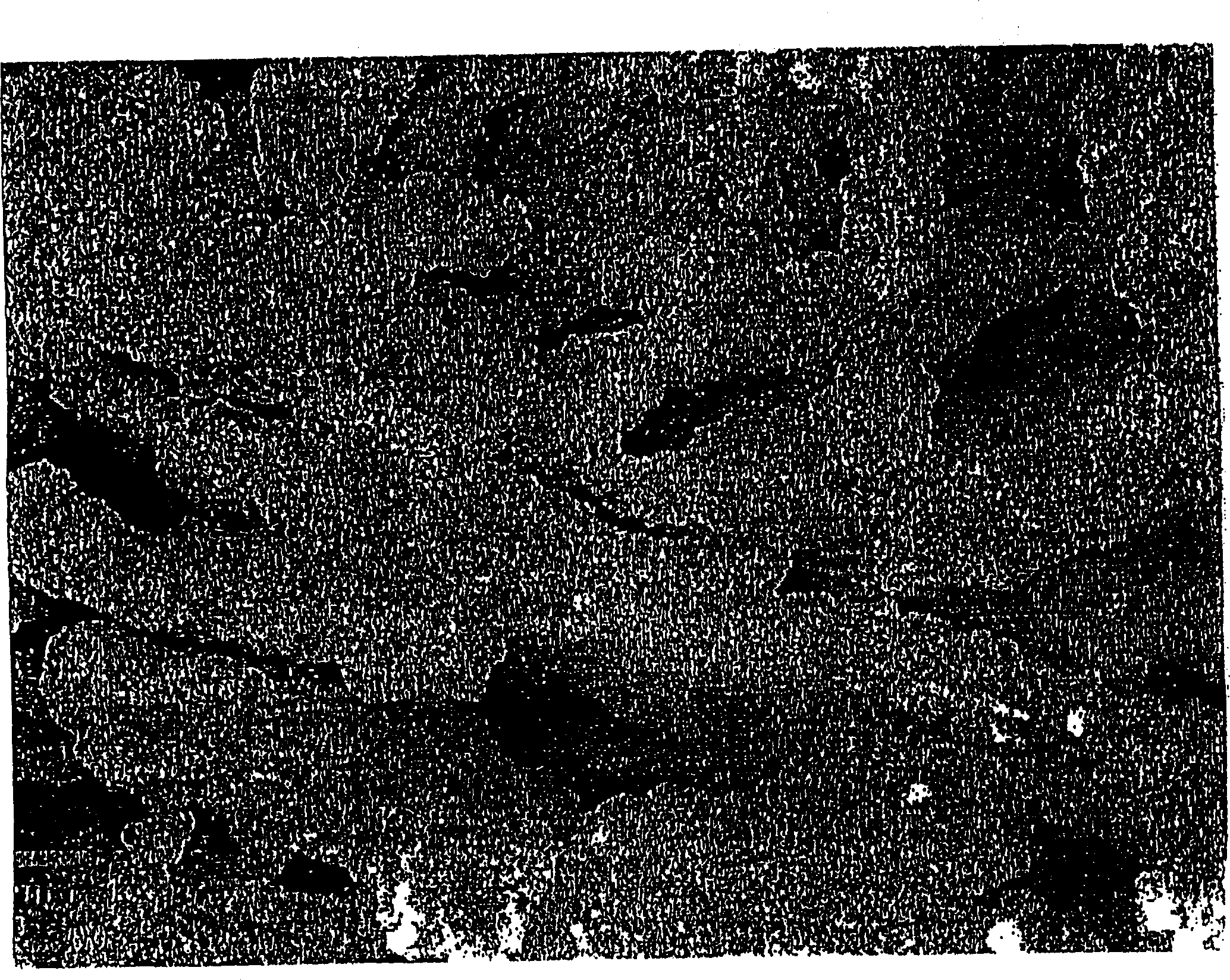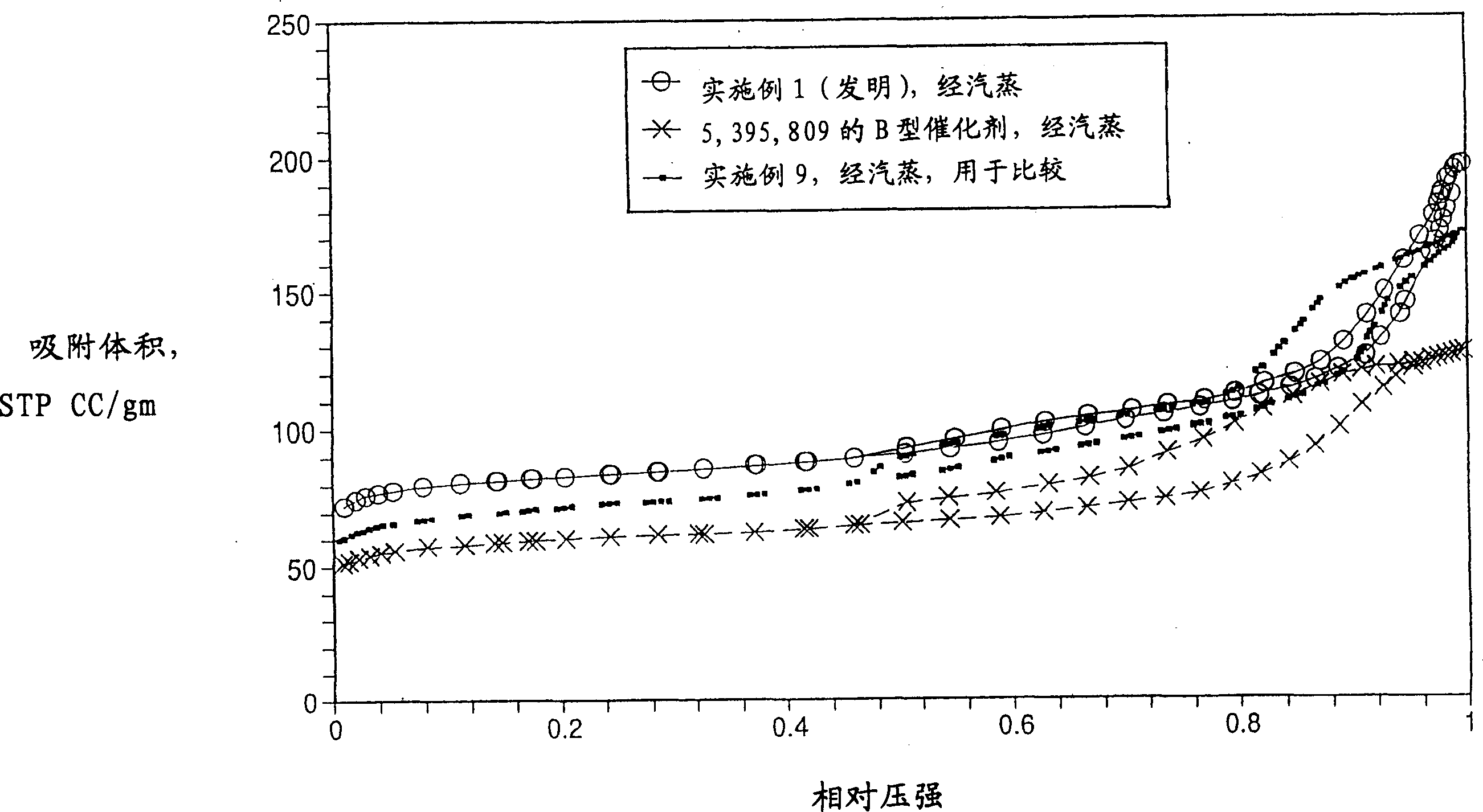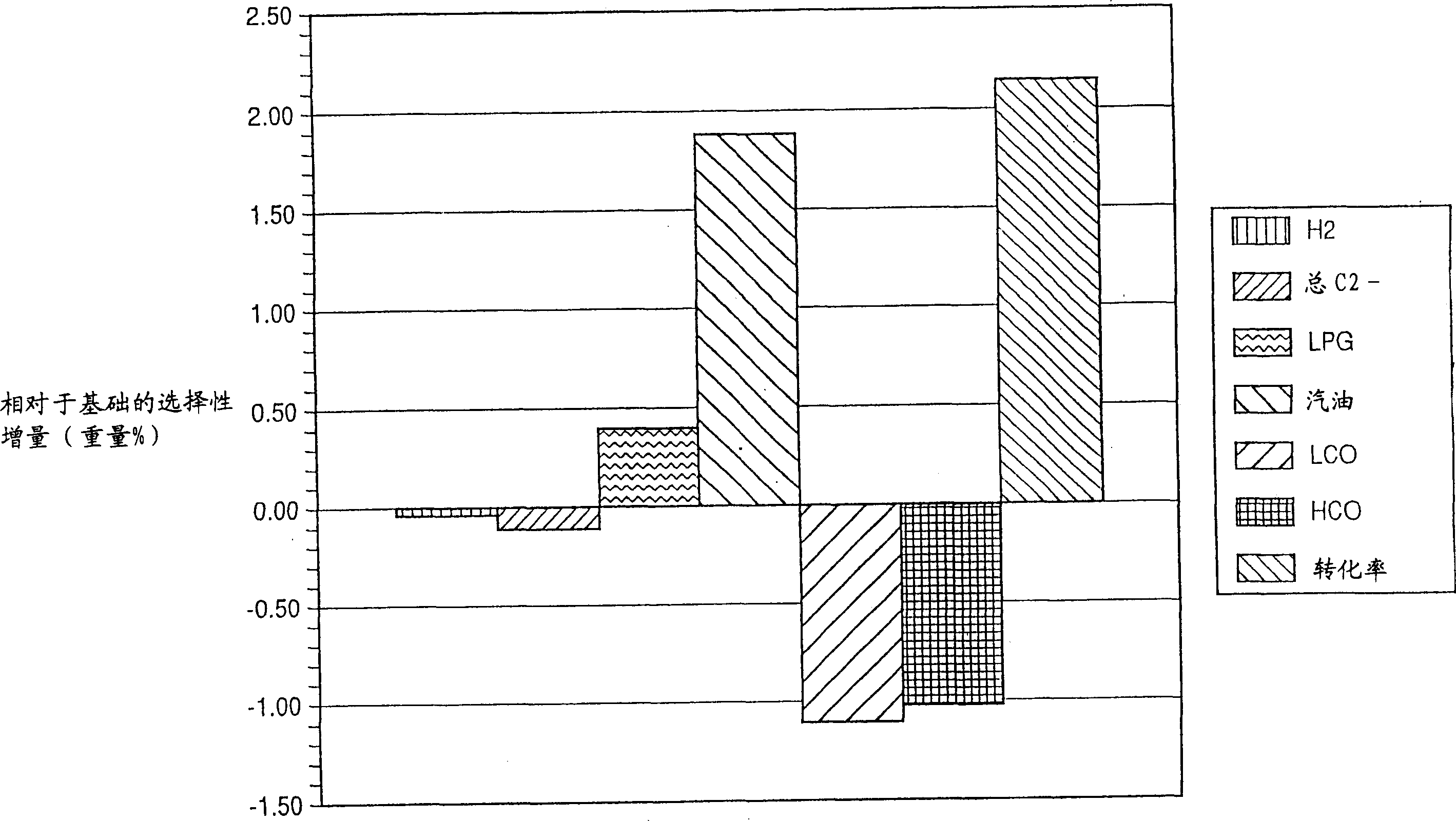Structurally enhanced cracking catalysts
A catalyst, fluidized catalytic cracking technology, applied in the direction of physical/chemical process catalyst, molecular sieve catalyst, catalyst activation/preparation, etc., can solve the problem that zeolite microsphere catalyst is not considered as a problem, and no diffusion limitation is found.
- Summary
- Abstract
- Description
- Claims
- Application Information
AI Technical Summary
Problems solved by technology
Method used
Image
Examples
Embodiment 1
[0072] Prepare microspheres containing: 30 parts metakaolin (MK), 20 parts wet media milled Ansilex 93 TM , 20 parts of HiOpaque calcined to above 1050°C after media grinding TM Pigment and 30 parts of NuSurf directly calcined to above 1050°C TM For pigments, the microspheres are milled and jet milled. To this mixture of calcined kaolin was added 15 parts from N brand Sodium silicate SiO 2 . The microspheres are not acid neutralized. Metakaolin source is Metamax TM (a ground powder), 55% solids in tap water, visbroken with 3 ml of Colloid 211 surfactant (Viking Industries, Atlanta, GA) per kg of calcined kaolin. An air driven Cowles mixer was used to add the dry kaolin in batches to the water already containing the surfactant. Add the kaolin to the water more slowly as the mixture thickens. Forms a very expansive slurry, but the viscosity can be reduced by continuous mixing. Gradual addition of kaolin and continuous mixing for 45 minutes or more resulted in a slurry...
Embodiment 2
[0080] Prepare microspheres containing: 30 parts MK, 20 parts wet media milled Ansilex 93 TM , 20 parts of NuSurf calcined to above 1050°C after ball milling TM Pigments and 30 parts of NuSurf prepared by grinding hydrated pigments and then calcining above 1050°C TM Aggregates of mullite, plus 15 parts from brand N Sodium silicate SiO 2 . The microspheres were neutralized with acid.
[0081] MK source is second batch of Metamax visbroken with C211 dispersant at 55% solids TM . Ansilex 93 Media Milled TM Same as the slurry prepared in Example 1.
[0082] Ball milled NuSurf was prepared by calcining hydrated exfoliated pigments in cordierite discs at 2350°C for four hours in a preheated furnace TM Mullite. The material was crushed, ground and then wet ball milled at 46% solids. The final product was a low viscosity slurry with 92% < 2 [mu]m (measured by laser light scattering).
[0083] NuSurf in this example TM The preparation of mullite was aimed at ensuring the ...
Embodiment 3
[0089] A preparation containing 30 parts MK and 70 parts NuSurf TM Microspheres of mullite aggregates with unusually high pore volume and unusually wide macropores. NuSurf TM Mullite aggregates were prepared by grinding and calcining to 1050°C. Calcined kaolin mixture and 15 parts from N brand Sodium silicate SiO 2 Spray dry together. The microspheres were neutralized with acid.
[0090] MK source is the Metamax of reduced viscosity in embodiment 2 TM of the same batch. NuSurf TM The mullite (aggregate) was also the same batch that was visbroken in Example 2. The two slurries were maintained in suspension by rolling in closed tanks until mixing was required.
[0091] The slurries for spray drying were obtained by mixing the two component slurries in a Cowles mixer in a ratio of 30:70 and 4.00 kg dry total of the main ingredient as described above. Add 2.14kg N brand directly to the slurry Sodium silicate to form a 48% solids mixture that is fluid enough to be pum...
PUM
| Property | Measurement | Unit |
|---|---|---|
| porosity | aaaaa | aaaaa |
| porosity | aaaaa | aaaaa |
| porosity | aaaaa | aaaaa |
Abstract
Description
Claims
Application Information
 Login to View More
Login to View More - R&D
- Intellectual Property
- Life Sciences
- Materials
- Tech Scout
- Unparalleled Data Quality
- Higher Quality Content
- 60% Fewer Hallucinations
Browse by: Latest US Patents, China's latest patents, Technical Efficacy Thesaurus, Application Domain, Technology Topic, Popular Technical Reports.
© 2025 PatSnap. All rights reserved.Legal|Privacy policy|Modern Slavery Act Transparency Statement|Sitemap|About US| Contact US: help@patsnap.com



